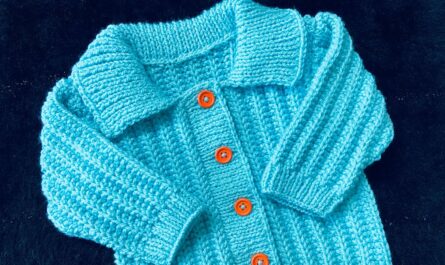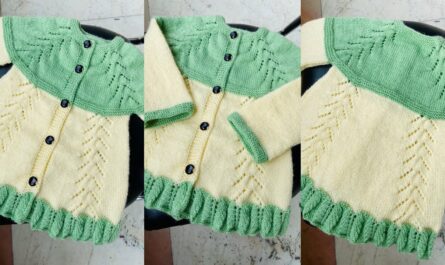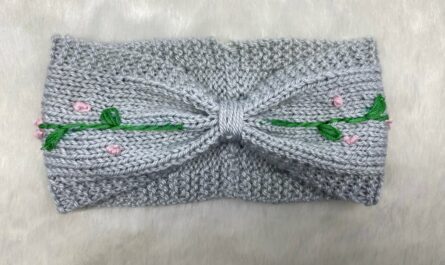A 2-year-old is a whirlwind of discovery, curiosity, and boundless energy. They’re growing, exploring, and developing their own tiny personalities. What better way to keep them cozy during their adventures than with a beautiful, hand-knitted cardigan? Unlike tiny newborn garments, a cardigan for a two-year-old is a functional, durable piece that will see them through countless playtime sessions, park visits, and cuddly moments. It’s a project that combines the joy of knitting with the practical needs of an active toddler, allowing you to infuse warmth and unique style into their wardrobe.
This detailed article will guide you through the process of knitting a charming cardigan specifically for a 2-year-old baby girl, covering essential considerations, popular design elements, and tips for success.
Why Knit a Cardigan for a 2-Year-Old?

- Practical Layering: Toddlers are masters of temperature regulation through layers. A cardigan is perfect for throwing on for a quick outing or adding warmth indoors without the fuss of a pullover.
- Durability & Comfort: You choose the yarn, ensuring it’s soft against their delicate skin, breathable, and sturdy enough to withstand active play and frequent washing.
- Expression of Personality: At two, children start to have preferences! You can incorporate their favorite colors, simple motifs, or create a style that perfectly captures their emerging personality.
- Cherished Keepsake: A handmade cardigan is more than just clothing; it’s a tangible memory of their early years, imbued with your love and effort.
- Skill Progression: For knitters moving beyond newborn items, a 2-year-old size offers a great step up, allowing you to practice more complex shaping and stitch patterns on a larger scale.
Key Considerations for Design & Yarn:
When knitting for a 2-year-old, practicality, comfort, and safety are paramount, alongside style.
- The “Toddler Factor”:
- Active Lifestyle: The cardigan needs to allow for full range of motion – crawling, climbing, running, playing. Look for patterns with comfortable ease.
- Growth Spurts: Toddlers grow quickly! Consider adding 2-4 inches (5-10 cm) of “positive ease” (the garment’s finished measurement being larger than the child’s body measurement) to allow for layering and extended wear.
- Messy Explorers: This is crucial: Your chosen yarn must be machine washable and durable enough to withstand frequent trips through the laundry.
- Curious Fingers: Button security is paramount. Ensure all closures are firmly attached.
- Yarn Choice (Utmost Importance!):
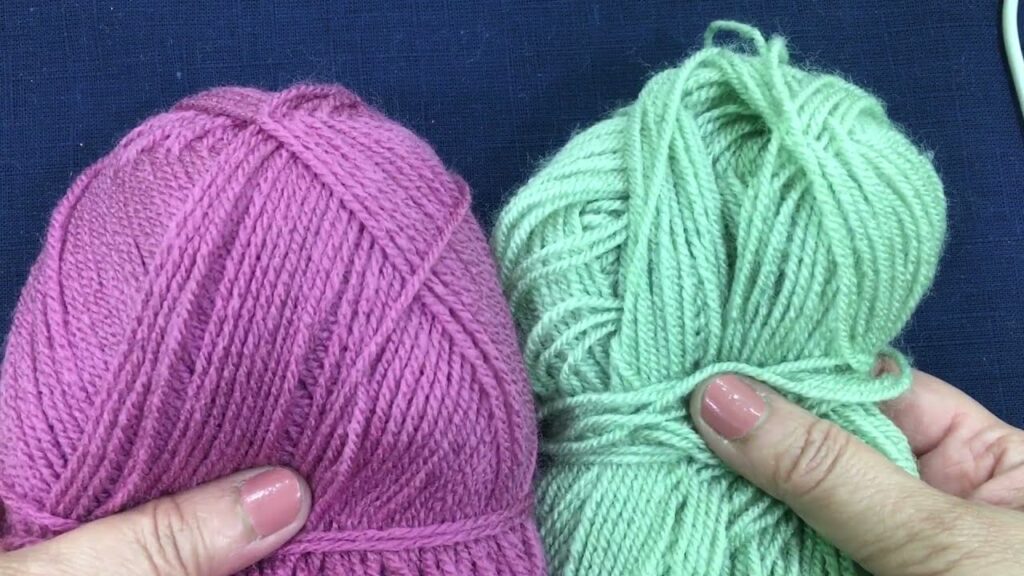
- Fiber:
- Superwash Merino Wool: An excellent choice. It’s incredibly soft, warm, breathable, and most importantly, machine washable – a non-negotiable for toddler clothing.
- Cotton or Organic Cotton: Ideal for warmer climates or sensitive skin. Durable, breathable, and washes beautifully.
- Baby-Specific Acrylics or Blends: Modern acrylics are often soft, hypoallergenic, and extremely durable. Blends (e.g., merino/nylon for extra resilience, cotton/bamboo for softness and drape) can offer the best of both worlds.
- Weight:
- DK (Double Knitting) or Worsted Weight: These are highly recommended. They knit up at a good pace, provide clear stitch definition, and create a cozy yet comfortable fabric without being too bulky for active play.
- Color Palette (Beyond Pastels!): While pastels are lovely, 2-year-olds often enjoy more vibrant hues.
- Cheerful Brights: Sunny yellows, coral, berry pinks, bright greens, vivid blues.
- Jewel Tones: Muted sapphire, emerald, ruby, or amethyst for a sophisticated look.
- Earthy Tones: Sage green, mustard yellow, rust, terracotta, oatmeal, charcoal.
- Variegated/Self-Striping Yarns: These create effortless color changes and visual interest without extra work.
- Speckled Yarns: Trendy and playful, great for adding texture.
- Color Blocking: Bold and modern, using two or three contrasting colors.
- Sizing (2T/24 Months):
- A typical 2-year-old’s chest circumference is approximately 20-22 inches (51-56 cm). Your pattern will provide finished measurements for different sizes.
- Gauge Swatch (Absolutely Non-Negotiable!): This is the single most critical step for any garment.
- Knit a large swatch (at least 6×6 inches / 15×15 cm) in your main stitch pattern.
- Wash and block it exactly as you plan to treat the finished cardigan. This is crucial for accurate sizing.
- Measure your stitches and rows per inch/cm precisely.
- Adjust your needle size (up if too tight, down if too loose) until your swatch matches the pattern’s specified gauge.
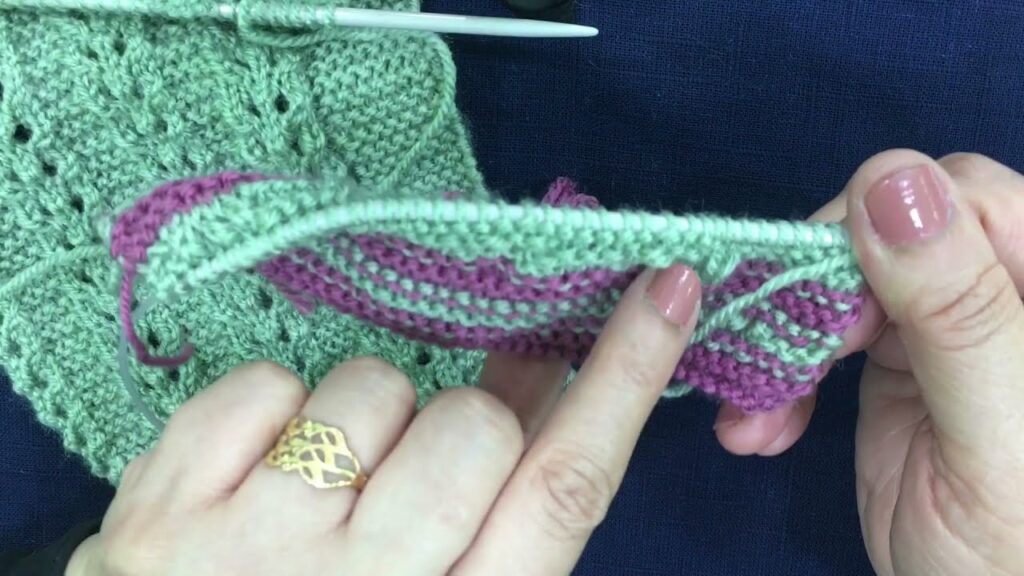
- Closure:
- Buttons: The most common closure. Choose durable, child-friendly buttons (at least 1/2 inch / 1.25 cm in diameter to prevent choking hazards). Wooden, chunky plastic, or novelty buttons (flowers, animals) are popular. They must be securely sewn.
- Zippers: More complex to insert into knitting, typically for experienced knitters.
- Toggles: Charming for a rustic look, but ensure they are very securely fastened.
- Snaps: Can be hidden under a placket for a clean, flat closure.
- Ease of Use: Buttons/fasteners should be easy for an adult to manipulate, but secure enough to withstand an active toddler.
Design Elements & Stitch Patterns:
Balance durability and charm, allowing for expressive touches suitable for a little girl.
- Practicality Meets Playfulness:
- Robust Edges: Reinforce cuffs, hems, and button bands with durable stitches like 1×1 or 2×2 ribbing, or a few rows of garter stitch, to withstand wear and tear.
- Avoid overly delicate lace or very fine yarns that might snag easily during play.
- Stitch Patterns:
- Stockinette Stitch: A classic, smooth canvas that lets your yarn color or embroidery shine.
- Garter Stitch: Simple (knit every row/round), squishy, reversible, and very durable. Great for full cardigans or textured bands.
- Moss Stitch / Seed Stitch: Creates a lovely, subtle texture that lies flat and is very durable. Excellent for edgings, yokes, or full bodies.
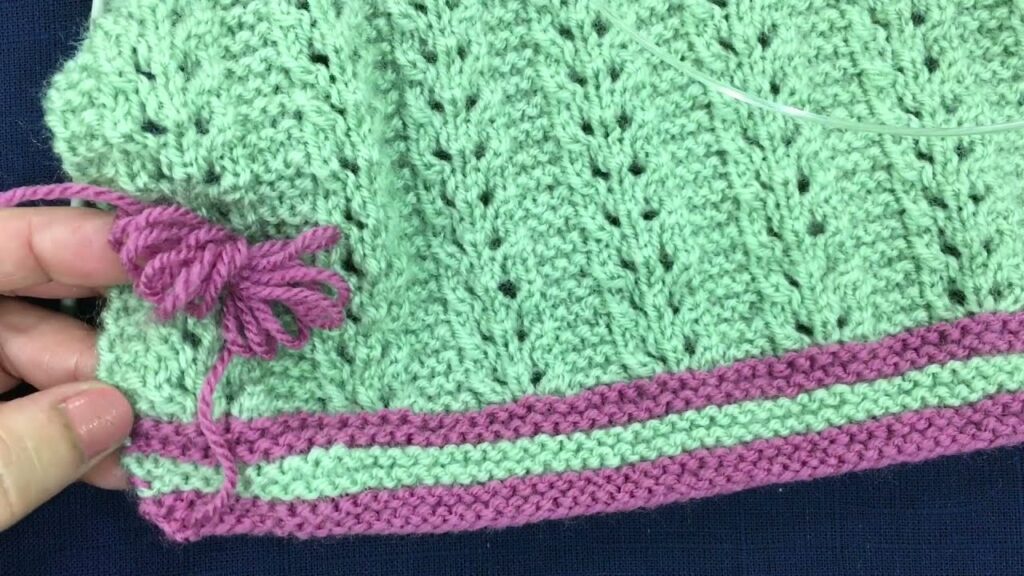
- Basketweave: A more pronounced, pleasing texture that adds substance to the fabric.
- Simple Cables: Classic and timeless. Think a single rope cable up the front, a small panel of cables on the back, or cables integrated into a larger pattern. They add visual interest without being overly intricate.
- Textured Stripes: Create interest by alternating sections of knit/purl rows (e.g., bands of stockinette alternating with garter stitch).
- Lace (Simple): Very easy lace patterns (e.g., single eyelet rows, simple 2-row repeat patterns like “faggoting stitch” or small ladder lace) can add a delicate touch without compromising durability.
- Colorwork (Fun & Engaging):
- Stripes: A perennial favorite. Play with varying widths of stripes, cheerful color combinations, or subtle tone-on-tone effects.
- Color Blocking: Bold and modern. Use a contrasting color for the yoke, sleeves, pockets, or the bottom hem.
- Simple Intarsia: Incorporate a single, eye-catching motif like a star, a simple animal silhouette (cat, bunny), a heart, or an initial on the front or back.
- Duplicate Stitch: Perfect for adding small, precise motifs after knitting. This is great for tiny details that would be too fiddly for intarsia.
- Details & Embellishments:
- Pockets: Small patch pockets (in garter or stockinette) on the front are both functional (for tiny treasures!) and incredibly cute.
- Hoods: Add extra warmth and undeniable cuteness, turning a cardigan into a playful outerwear piece.
- Collars: A simple flat collar can add a polished, shirt-like look.
- Applied Motifs: Securely sewn knitted or crocheted shapes (flowers, stars, clouds, simple animal faces). Crucially, ensure all applied motifs are sewn on extremely securely with no loose threads or parts that could pose a choking hazard.
- Contrasting Edging: Use a different color for the ribbing, I-cord, or simple borders to frame the cardigan.
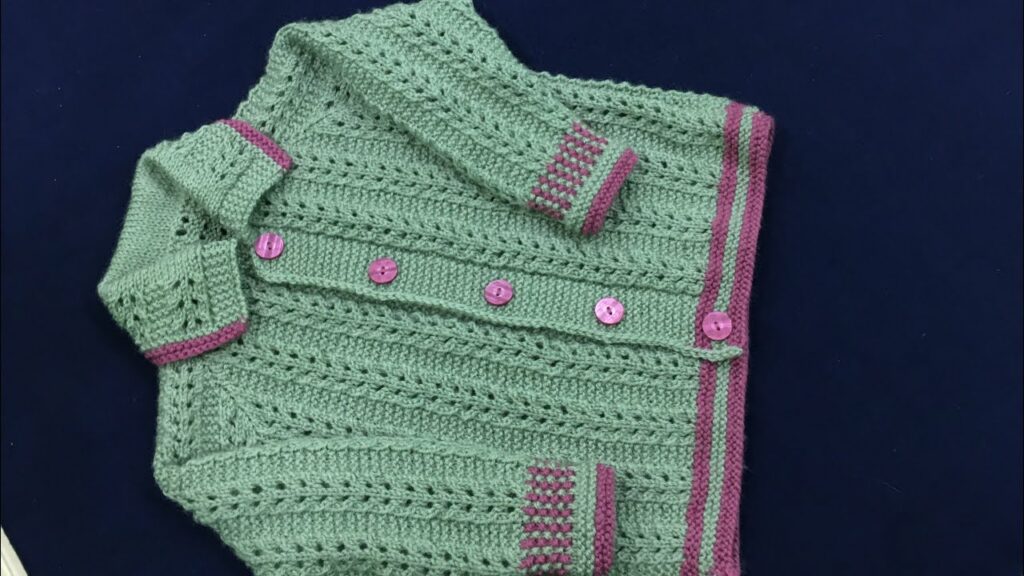
Common Construction Methods:
For a 2-year-old’s cardigan, seamless methods are often preferred for their comfort and ease.
- Top-Down Seamless (Raglan or Circular Yoke):
- How it Works: You cast on at the neck and knit downwards in the round. Increases are made along “raglan” lines (diagonal lines for raglan) or evenly around (for a circular yoke) to shape the shoulders and sleeves. The body and sleeves are then separated and knit individually.
- Pros: No seaming (a huge bonus!), easy to try on for length adjustments, often quicker to finish.
- Cons: Requires circular needles and often DPNs (Double Pointed Needles) or the Magic Loop method for the sleeves.
- Highly Recommended: For its comfortable fit and knitting enjoyment.
- Bottom-Up (Flat Pieces, Seamed):
- How it Works: The back, two fronts, and two sleeves are knit as separate flat pieces. These pieces are then sewn together (seamed) at the shoulders, sides, and underarms. Button bands are often picked up and knit directly onto the sweater, or knit separately and sewn on.
- Pros: Uses straight needles (or circulars used flat), great for knitters who are more comfortable with flat knitting.
- Cons: Requires accurate seaming, which can be time-consuming for some knitters.
- Good for: Knitters new to garments who prefer to focus on basic flat knitting skills.
General Knitting Tips for Success:
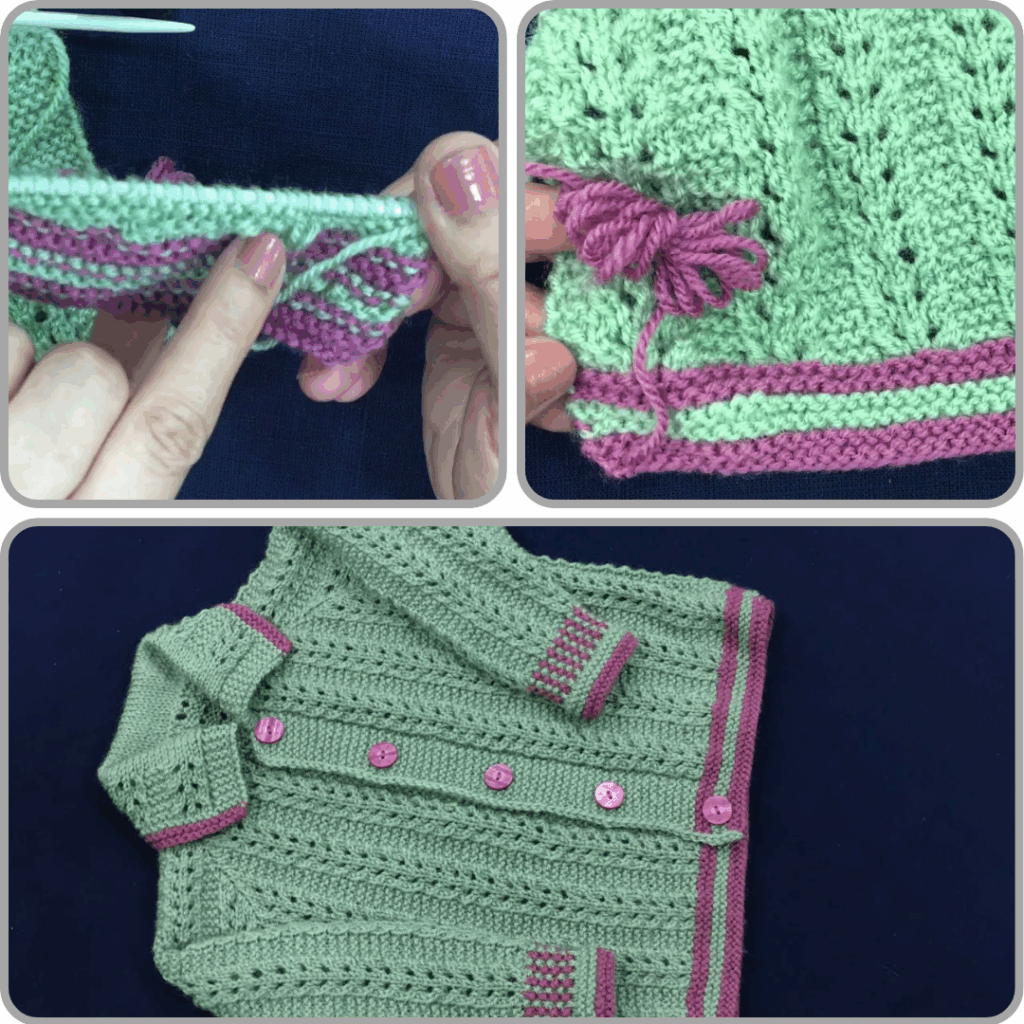
- Read the Entire Pattern First: Before casting on, read the pattern from beginning to end. This helps you understand the overall construction and anticipate any new techniques.
- Watch Video Tutorials: If a new technique (like a specific increase/decrease, buttonhole method, picking up stitches, or seaming technique) is unfamiliar, watch a quick video tutorial online.
- Use Stitch Markers! They are invaluable for marking raglan lines, stitch pattern repeats, buttonhole placements, or the beginning of a round.
- Don’t Fear Mistakes: Every knitter makes them! A good seam ripper is an essential tool. It’s always better to undo a few rows and correct an error than to have a finished garment you’re unhappy with.
- Blocking is Crucial: This is the magical final step that transforms your knitting. Blocking evens out your stitches, opens up stitch patterns, and helps your garment lay beautifully and conform to its intended size and shape. Gently wash your finished cardigan, squeeze out excess water, lay it flat on a towel or blocking mats, shaping it to the correct dimensions, and let it air dry completely.
- Toddler Safety First: Double-check that all buttons are sewn on extremely securely. Avoid any long ties (especially around the neck) or small, loose embellishments that could pose a choking hazard.
Video Tutorial :
Knitting a cardigan for a 2-year-old baby girl is a truly rewarding endeavor. You’ll create a durable, practical, and beautiful garment that will be a favorite for both the child and their parents, a tangible expression of warmth and love in every stitch. Happy knitting!

